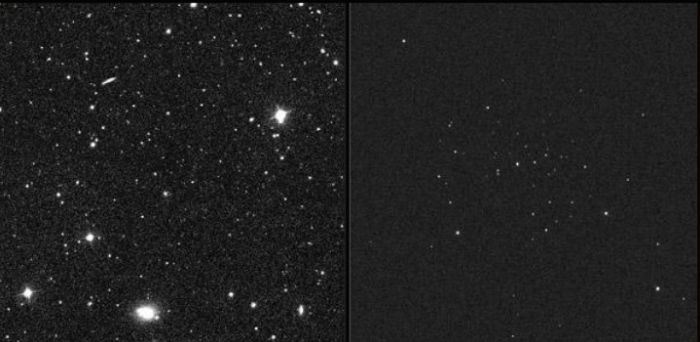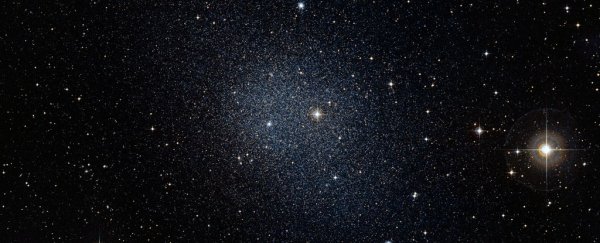A galaxy in nearby space called Segue 1 is quite the oddity. It's very small, and very faint, it hangs out very close to the Milky Way, and no one knows quite where it came from.
But now astronomers have accurately measured its movement for the first time, which has finally offered some clues.
So what, exactly, is Segue 1? Well, in the last decade or so, our telescope technology had grown powerful enough to spot a small new class of galaxy. They are very compact, occupying the space somewhere between a globular cluster and a dwarf galaxy.
They're called ultra-faint dwarf spheroidal galaxies, and Segue 1 was the first to be discovered in 2006 data from the Sloan Digital Sky Survey. The paper describing it was published in 2007.
It's filled with ageing or very old stars, dating back to the early Universe.
It has low metal content, which is consistent with a very old object - metals didn't propagate in the Universe until a generation or two of stars had gone supernova, forging heavy elements in their death.
Segue 1 also has a luminosity, or brightness, of around just 300 Suns. That's much fainter than a typical globular cluster, which was what it was originally taken for.
In fact, astronomers aren't entirely sure that it isn't a globular cluster yet - the difference seems to lie in the two objects' formation history - although this new research may have answered that question about Segue 1.
In addition to figuring out whether Segue 1 is a galaxy or a globular cluster (oops, headline spoilers), the research team wanted to know where it came from, and exactly how it ended up orbiting the Milky Way at a distance of just 23,000 parsecs (75,000 light-years).
They used data from the Sloan Digital Sky Survey and the Large Binocular Camera over a baseline of 10 years to calculate Segue 1's proper motion. And they found that it orbits the Milky Way once every 600 million years.
That's really tight. But it's also too far away for Segue 1 to have been a tidally disrupted star cluster - one on the verge of being annihilated by the gravity of the Milky Way.
 The region of sky where Segue 1 was found (left) and the galaxy itself (right). (Sloan Digital Sky Survey and M. Geha)
The region of sky where Segue 1 was found (left) and the galaxy itself (right). (Sloan Digital Sky Survey and M. Geha)
This means it's more likely to fall into the "galaxy" category - which supports previous findings that, even though the galaxy has low metallicity, it has a significant spread of iron, something not found in globular clusters.
So that's two points to Gryffindor the galaxy interpretation.
As for how it got there? Well, that's still not a certainty. The researchers found two scenarios the most plausible.
Of those two, the less likely is that Segue 1 was a satellite around a different galaxy. This galaxy collided with the Milky Way around 12 billion years ago, and left Segue 1 swirling around on its own.
We know this is possible - the Milky Way has certainly fused with a number of other galaxies in the past, which astronomers can ascertain by the ripples those collisions left behind.
Segue 1's orbit isn't consistent with any of those known collisions, but it's entirely possible there was one astronomers haven't discovered yet.
The second option - and the one the research team believes a more likely scenario, at 75 percent probability - is that Segue 1 was just wandering around space, minding its own business, when, one day about 8 billion years ago, it got captured into a Milky Way orbit.
Future observations and analyses may help characterise Segue 1 more clearly, but for now, it's looking like the little guy is a one awesomely weird galactic neighbour.
The full paper has been published in The Astrophysical Journal.
